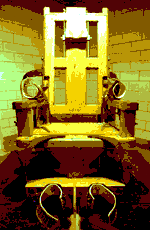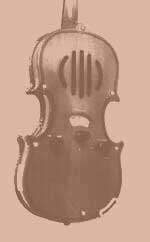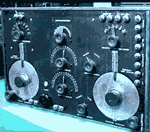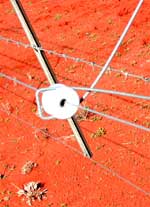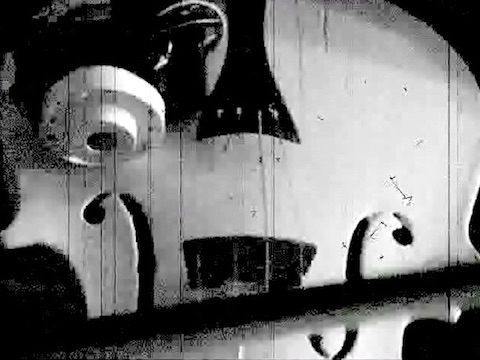 | |||||||

|
Rosenberg's Electric Violin the culture of alternating current |
|||
|
Although George D Beauchamp made the first known electric violin in 1936 - the Vega played by Stuff Smith ; Johannes Rosenberg is credited with the invention of the electrical violin in 1949, while working on his Unified Relative Music Theory. His approach was radical. Instead of a musical instrument that was merely electronically amplified, Rosenberg considered the possibilities of actually generating AC current while playing the violin. Miniature electro-magnetic generators fitted with gearing systems, able to maximise the slip-hold-slip-hold action of the bow, were fitted to each metal string. The generators had a unique double function - electrical power supply and extreme amplification. History records that the results were musically very mixed (the performances were criticised for excessive tremolo) and often fatal to the participating musician. Particularly disturbing was the use of the G string in the 50-55 Herz range.
There was of course intense electrical rivalry between Edison and Westinghouse, using the electric chair to demonstrate superior technologies (whether AC or DC should be the viable form). Later Rosenberg saw the practical, as well as the strictly musical possibilities for a violin providing a reliable DC power supply, especially in the Australian outback. Key to his invention was the refined electro-magnetic coil incorporated in the bridge of the violin yet the circuits hidden in the inside of the instrument. Proof of generating function was exhibited by a flashing electric light (seen through the 'f' holes) and piezo sound generator. He took his idea of a violin-powered radio up with Marconi but it was rejected out of hand (It is interesting to note that, due to the high cost of batteries, a clockwork powered radio is now available throughout many of the poorest countries in the third world). Elements of Rosenberg's innovation eventually found use in the millions of miles of efficient electric fences to be found on the fifth continent. The fences are still played today (with adapted technology or an old bucket filled with rotting grapefruit) and provide stimulating if not shocking entertainment for many Australians. The basic process for the bow induced current is as follows: E= øZN/60xP/A where: E = ø, = flux/bow Z = total number of armature conductors and = number of bow strokes x number of reversals P= number of bow strokes (including deviations) A= number of parallel paths in armature [A=2 (for wave winding), A=P (for lap winding)] N=armature rotation (bspm) E= e.m.f induced in any parallel path in armature I hope that clears up any misunderstanding. The story of Rosenberg's desire to generate electricity through violin performance also tracks the history of violin production in China. Originally a casual command from Mao Zedong, Chinese violin production has taken over the world by storm - as with the production of all cheap but necessary things. |
 |
